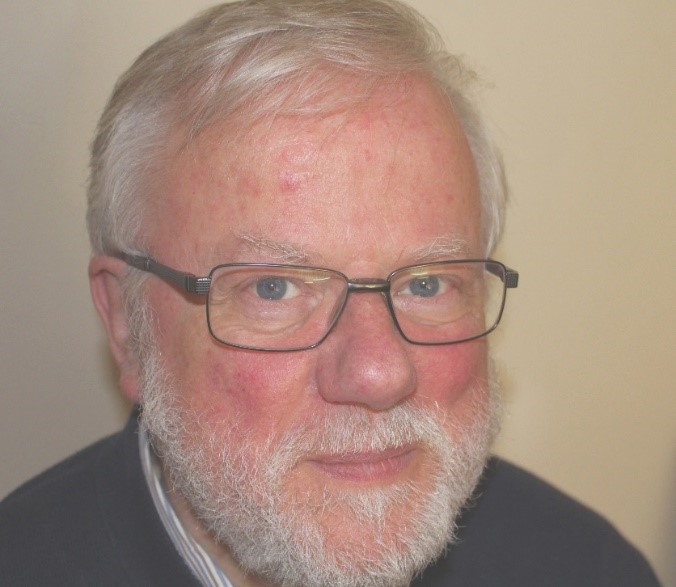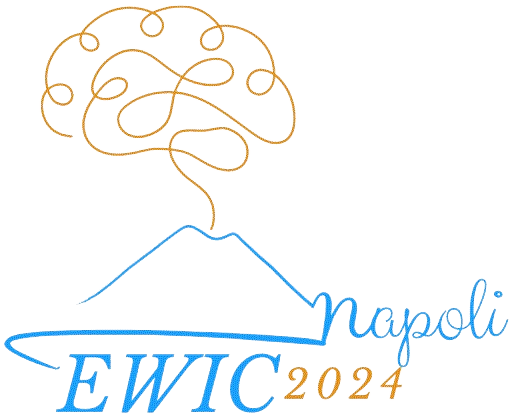SPECIAL GUESTS
At the EWIC 2024 in Naples we will have two special guests: Michel Denis and Robert Logie. The decades-long commitment of Robert Logie and Michel Denis to EWIC has facilitated international collaboration and accelerated the advancement of knowledge in the field of visuospatial memory, mental imagery and cognition in general. Their passion for research and commitment to scientific dissemination make them an inspiration for our scientific community.

#7e3bd0
Michel Denis is a renowned French psychologist and researcher at the CNRS (Emeritus Senior Research Fellow since 2008, Honorary Senior Research Fellow since 2018). A pioneer in the field of mental imagery, Denis has delved into its role in memory, language, problem-solving, and creativity. His studies have illuminated how mental images bridge the gap between abstract thought and concrete reality, shaping our understanding of the world and guiding our behavior. He also developed a research program on spatial cognition, investigating the role of image and language in the construction of spatial knowledge. He has published over 200 scientific articles in international journals and books, cementing his reputation as a leading figure in the field. Michel Denis has held important positions and received significant awards such as the title ‘Chevalier de la légion d’honneur’ in 2011.
Michel Denis will give a talk entitled “Space in life, space in film”

#7e3bd0
Robert H. Logie is one of most influential and acknowledged British psychologists, now Professor Emeritus at the University of Edinburgh. Robert Logie has dedicated his research to understanding human memory across its spectrum. His innovative and pathbreaking work spans from understanding the cognitive architecture of working memory in healthy adults to the decline in cognitive function in both normal aging and neurodegenerative diseases. He has also explored how to design digital systems that can support human cognitive abilities. He has published over 200 journal articles, 60 book chapters, and has authored or edited 20 books and special journal issues. Throughout his long career, Robert Logie has held prestigious roles and positions, including as first chair of the Psychonomic Society from outside of North America. In 2022, he was elected the 51st Bartlett Lecturer by the British Experimental Psychology Society for lifetime contributions to experimental psychology.
Robert Logie will give a talk entitled “Visual working memory: Diverse assumptions, testing methods, and participant strategies”
Space in life, space in film
Michel Denis
Université Paris-Saclay, Orsay, France
The first public projection of films took place in Paris on 28 December 1895. Since that historic date, human beings, in addition to their experience of their respective environmental spaces, have also been exposed to films designed to convey representations of real or artificial spaces. Very early, psychologists were committed to account for the cognitive activity elicited by the perception of film images (Münsterberg, 1916). Follow-up investigations were devoted to understanding how people who attend films adapt themselves to the modes of presentation of information specific to this media, such as cutting techniques (Anderson, 1996; Zacks, 2014). The question was about whether real environments captured by a camera elicit visuo-spatial representations that have particular properties in the spectators’ minds. An inherent feature of film images is that they result from film makers’ decisions about their content in the restricted two-dimensional surface of a screen. The concept of framing is essential in this respect. Framing is a relevant component in other artistic domains, such as painting or theatre, but the unique characteristic of cinema is that the viewers are continuously exposed to a changing frame, involving a succession of perspective changes, which place obvious demands on the spectators’ cognitive capacities. In my presentation, I will consider the similarities and differences between daily life and filmed spaces. I will discuss the procedures by which cinema conveys information about spaces captured by a camera, either by filming scenes in continuity (travelling) or by making use of cutting techniques, which require spectators to cognitively integrate sequentially presented pieces of information. Based on a selection of illustrative film excerpts, I will show how film-makers creatively “play” with space in their productions.
Visual working memory: Diverse assumptions, testing methods, and participant strategies
Robert H. Logie
University of Edinburgh
Across nearly 40 years of EWIC meetings, visual working memory has been a recurring theme. However, over those four decades, the term visual working memory has been linked with different sets of theoretical assumptions and experimental paradigms, giving rise to considerable theoretical ambiguity. Baddeley (1986; Baddeley et al., 2021) describes the visuo-spatial sketch pad as the part of working memory that provides specific support for phenomenal mental experience of visual imagery and the mental manipulation of images in addition to temporary storage of visual representations. In a different literature, closely linked with research on visual perception (e.g. Brady et al., 2024; Luck & Vogel, 2013), visual working memory has been assumed to support retention of small arrays of visually presented stimuli that change from trial to trial, and with testing of memory after very brief delays on each trial. Here, the terms visual short-term memory and visual working memory tend to be used interchangeably. Related studies have linked the items in the temporary visual representations of each array with a focus of attention in visual working memory (e.g. Cowan et al. 2014; 2021). One further ongoing debate is whether the temporary representations are limited by visual precision or by number of items held (e.g. Bays et al., 2009; Schneeegans et al., 2020). Logie (1995; 2003; 2011; 2023) proposed that visual temporary representations are held in a limited capacity passive, and non-conscious store (visual cache) that is distinct from, but supports the phenomenal mental experience of visual imagery. Together, they form a set of functions within a broader, multi-component working memory system. I will argue that whether capacity is shown to be limited by precision or number of items may be driven by how memory is tested and the strategies that participants adopt to perform the experimental task.
